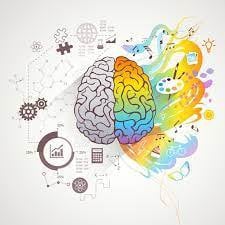As we journey through the stages of life, our bodies and minds inevitably undergo transformations. While we may not have the elixir of eternal youth, we do have a powerful tool at our disposal: art. The connection between art and aging is a fascinating subject, one that reveals the remarkable ability of art to stimulate new neural connections, enriching our lives as we grow older. In this article, we'll explore the profound impact of art on the aging brain and discuss the importance of incorporating creative expression into our lives as we age.
The Aging Brain
As we age, our brains undergo a series of changes. Neuroplasticity, the brain's ability to adapt and reorganize itself, remains a lifelong phenomenon. However, as we get older, our neural connections tend to decline in quantity and quality. This decline can lead to cognitive impairments, such as memory loss and reduced cognitive function. While these changes are a natural part of the aging process, they can be mitigated and even reversed to some extent through art.
Art as a Neural Workout
Engaging in creative activities, such as painting, drawing, writing, or even appreciating art, provides a cognitive workout for the brain. The act of creating art challenges the brain to make new connections, fostering neural growth and cognitive agility. It's like a fitness regimen for your brain, helping it stay flexible, resilient, and, in some cases, even regenerating lost connections.
Here's how art can help you age gracefully:
1. Improved Cognitive Function: Art engages multiple cognitive functions, including memory, attention, problem-solving, and creativity. These activities help keep your mind sharp and agile.
2. Stress Reduction: Artistic expression can be a therapeutic outlet for managing stress. Stress reduction is essential for maintaining cognitive health as we age.
3. Enhanced Emotional Well-being: Engaging with art can evoke powerful emotions and provide an outlet for self-expression. This emotional enrichment contributes to overall mental well-being, helping you maintain a positive outlook as you age.
4. Social Engagement: Participating in art classes or joining art-related groups fosters social connections, which are vital for mental and emotional health. Social interaction has been linked to cognitive resilience in older adults.
5. Lifelong Learning: Art encourages a lifelong learning mindset. Trying new techniques, experimenting with various mediums, and exploring different styles can challenge the brain and keep it active.
The Science Behind Art and Neural Connections
Neuroscientific studies have shown that engaging in artistic activities can increase the production of dopamine, a neurotransmitter associated with pleasure and reward. Dopamine not only enhances mood but also plays a crucial role in reinforcing neural connections. In other words, when you create or appreciate art, your brain rewards itself with a surge of dopamine, reinforcing the idea that art is enjoyable and worth pursuing.
Moreover, research has demonstrated that art therapy can be a valuable tool for individuals with neurodegenerative diseases like Alzheimer's. While it may not reverse the condition, it can significantly improve the quality of life for patients by stimulating dormant neural pathways and preserving cognitive function.
Conclusion
In a world that often values youth over experience, it's crucial to recognize the significance of art in maintaining the vitality of the aging brain. Art is a bridge that connects the past with the present, and it offers a pathway to the future. By engaging with art throughout our lives, we can stimulate new neural connections, enrich our cognitive health, and embrace the journey of aging with grace and vitality.
So, whether you're an experienced artist or a novice, it's never too late to pick up a paintbrush, write a poem, or visit a gallery. Embrace the beauty and power of art to keep your brain young, vibrant, and ready for the adventures that lie ahead.
